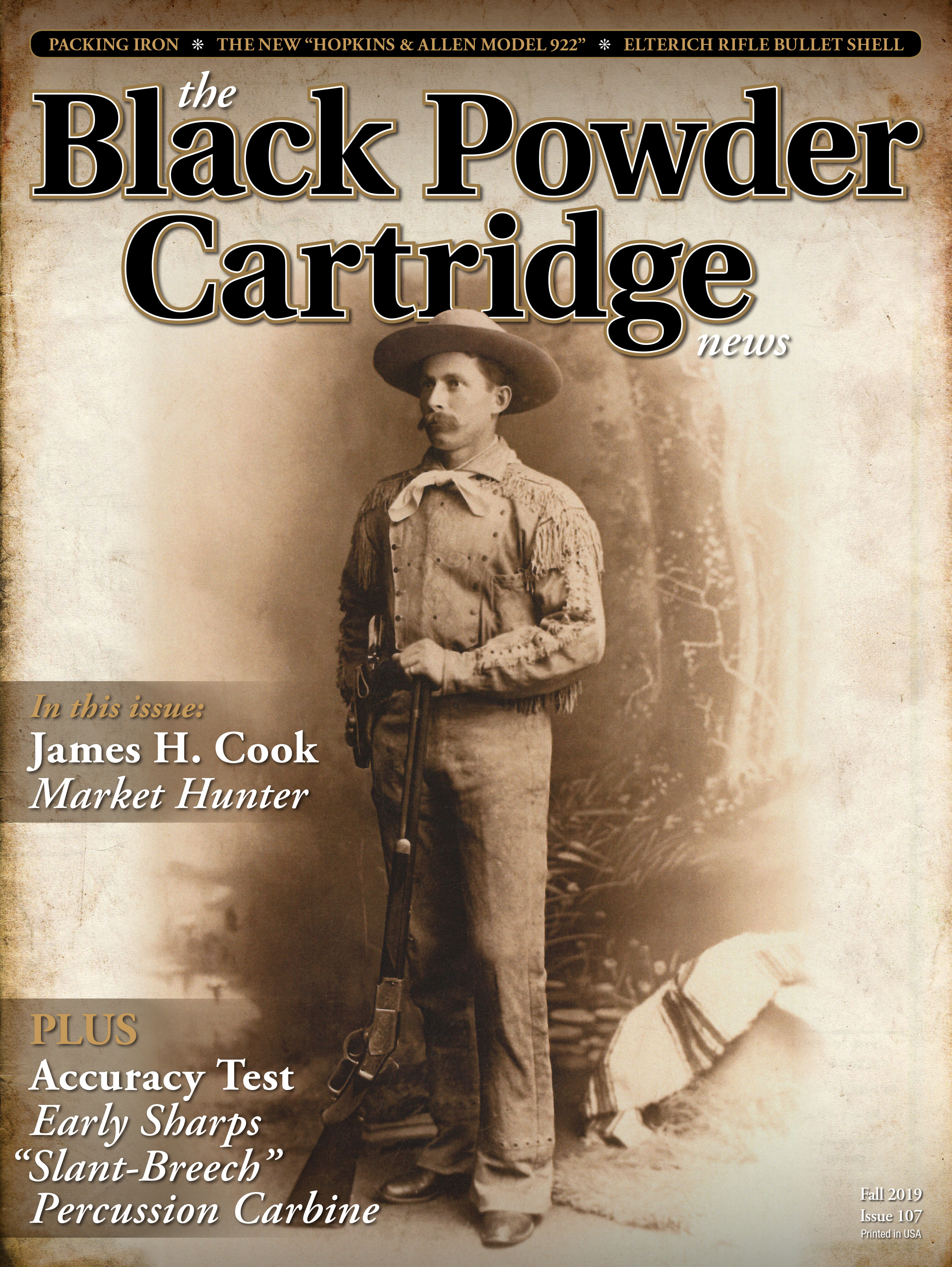Elterich Rifle Bullet Shell
feature By: Marc Davison | August, 19
The Elterich Rifle Bullet Shell (R-B-S) was patented in 1901 by Paul Otto Elterich (672824A) and was a cartridge adapter for shotguns, allowing them to fire centerfire rifle and pistol ammunition. The R-B-S consisted of a brass shotgun shell containing a steel chamber and a section of a rifled barrel. The brass shell had several longitudinal slots, which allowed the shell walls to be formed in a way that was somewhat ‘springy’ so that it would fit snug when inserted into the shotgun chamber. While the No. 1 and 2 had no additional barrel extension beyond the end of the shell, the No. 3, 4 and 5 had barrel extensions up to 7 ¼ inches.
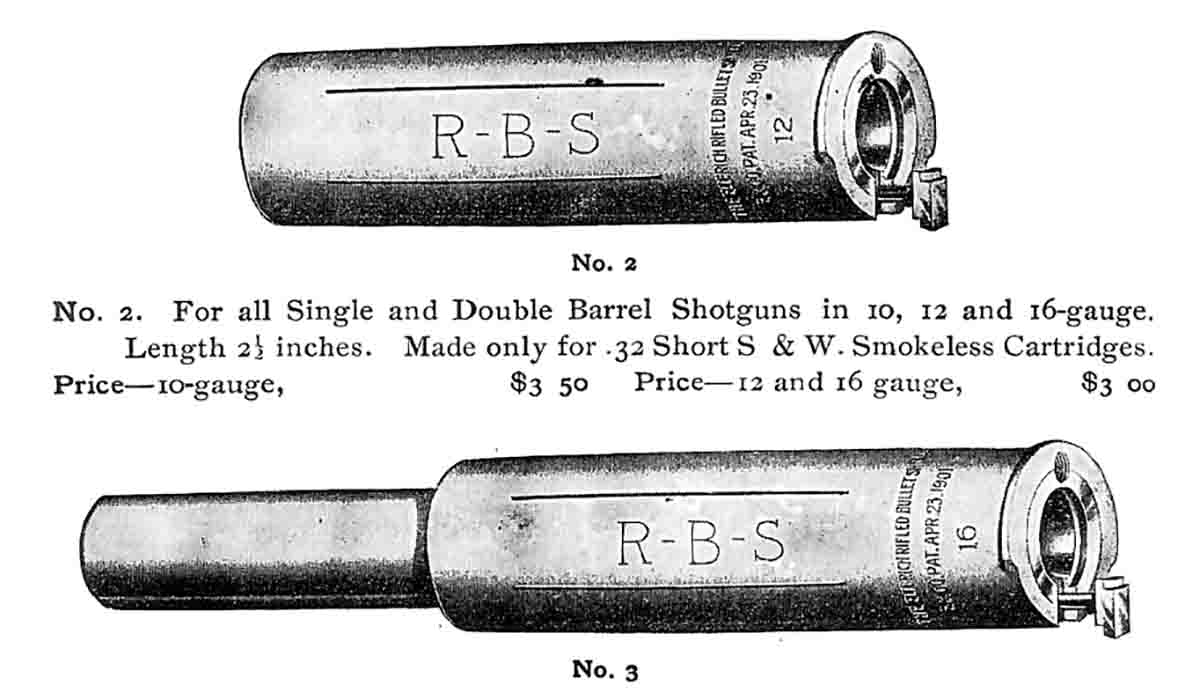
The Elterich R-B-S was manufactured initially by the Elterich & Co. Manufacturers of New York, then for a few years by the J. Stevens Arms and Tool Company. It is shown in several of their catalogues, the most likely first occurrence being in the #50 catalogue from 1902. I have found other references in the literature through 1904 but not much beyond that. Several prominent authors including Phil Sharpe (The Rifle in America, 1938) and Charles W. Sawyer (Our Rifles, 1920) provided a detailed description of the R-B-S, and it was occasionally featured for a short time in advertisements. According to Phil Sharpe, the R-B-S never gained much popularity and was short-lived. The “R-B-S” label is prominently stamped on the brass shell, sometimes around the top and other times longitudinally in the center of the shell.
The Elterich R-B-S was produced for 10, 12 and 16-gauge shotguns, and was available in five models (differentiated primarily by overall length) as described in the Stevens #50 catalog. Some authors state that it was available in only three models, with the No. 3 being available with different barrel lengths. My original instruction sheet from J. Stevens Arms & Tool Company only lists
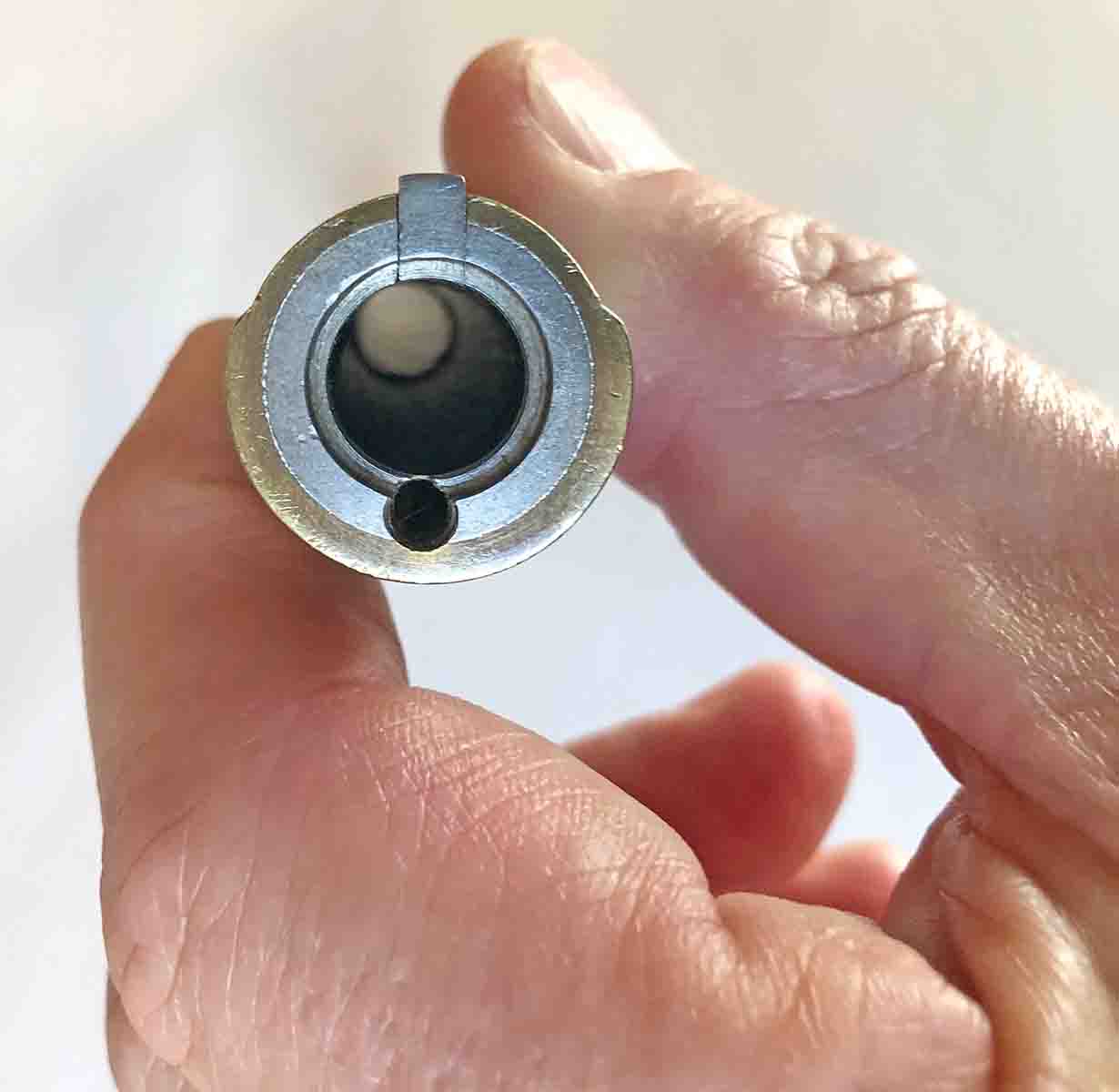
Barrel lengths, as described in the various publications, were 2½ inches for No. 1 and 2, 4 inches for the No. 3, 6 inches for the No. 4 and 10 inches for the No. 5. These were the actual length of the entire R-B-S from the shell bass to the end of the barrel section. The actual length the barrel extending beyond the brass shell was 1¼, 3½ and 7¼ inches, respectively, for the No. 3, 4, and 5 (see nearby pictures). All barrels were rifled; however, the No. 5 was available as a special order in smooth bore for shot cartridges. As seen in the nearby photo, the No. 5 had a bushing made to the end of the barrel along with radial adjustment screws, presumably for adjusting the fit within the shotgun barrel.
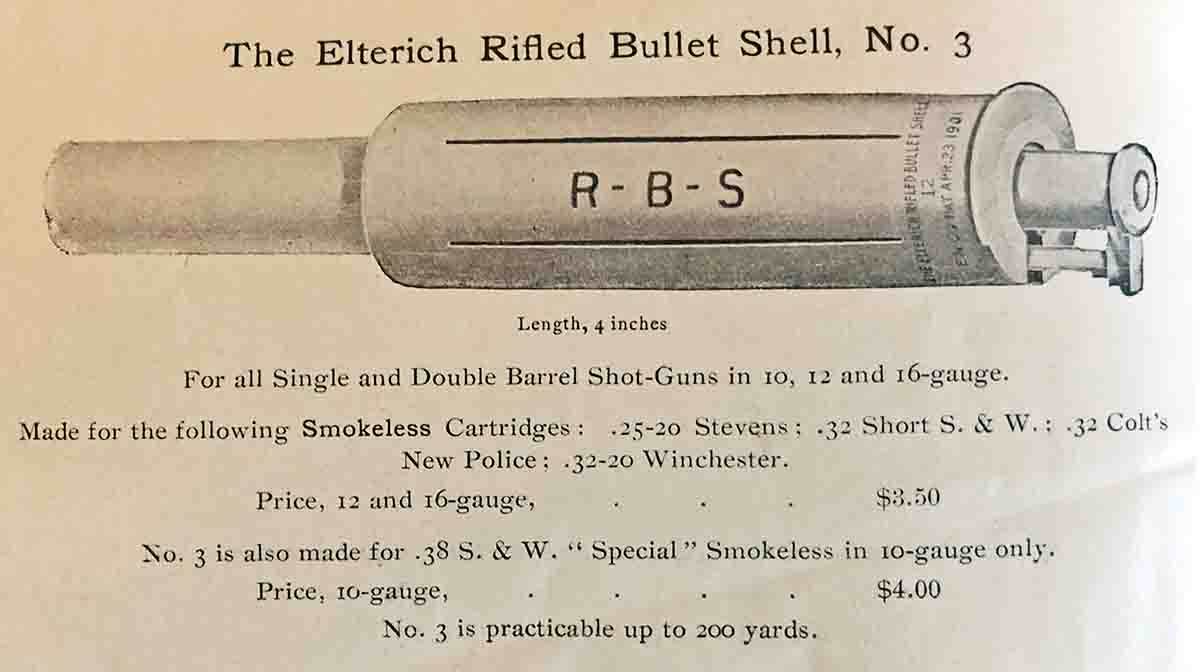
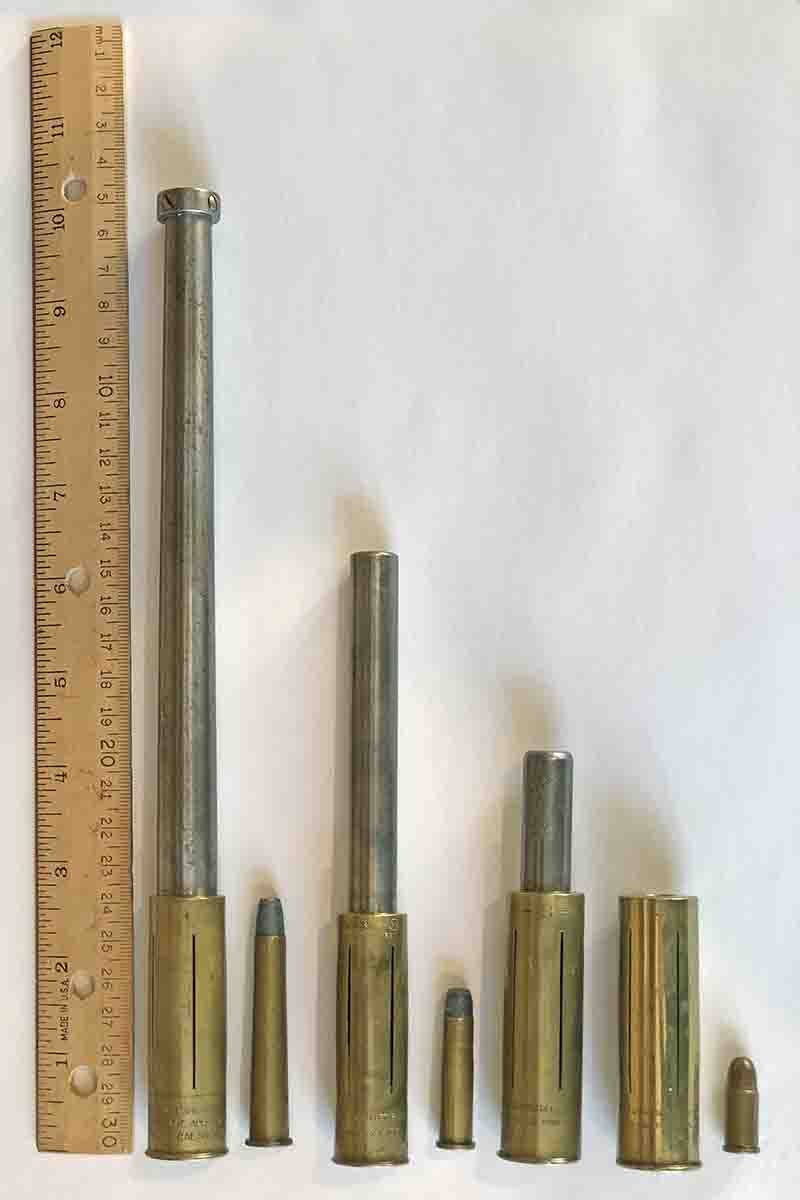
The No. 1 and 2 were available only in the .32 S&W Short cartridge. The No. 3 was also available in .32 Colt New Police, .32 WCF, and .38 S&W Special. The No. 4 was available in the above cartridges plus the .25-20 Stevens and .25-20 WCF. The No. 5 was available in all of the above as well as for shot cartridges on special order. My example in the near-by photo shows a No. 5 in .32-40 WCF, which is not listed in the Stevens catalogue and was likely a special-order item.
The caliber of the centerfire cartridge is often, but not always, stamped at the shell base. As for accuracy, I have no first-hand experience, however, the instruction manual shows a few targets at various distances from 100 down to 25 yards using the .32 Colt New Police cartridge. Most shots were inside a 12-inch circle at 100 yards, and all were within a 3-inch circle at 25 yards.
Anyone with a picture of a box, cleaner, or additional/clarifying information is encouraged to respond through the Black Powder Cartridge News.


